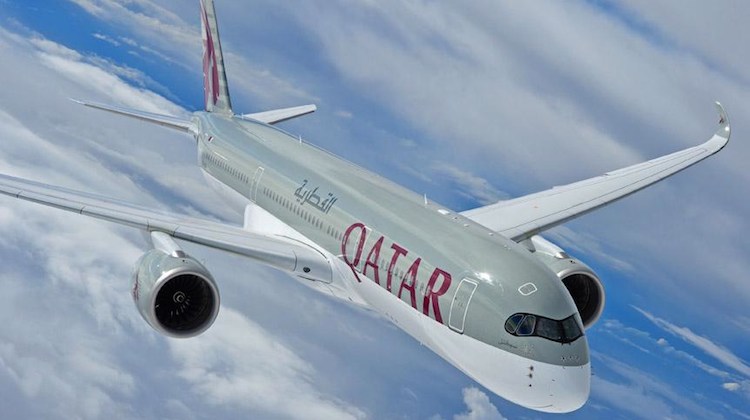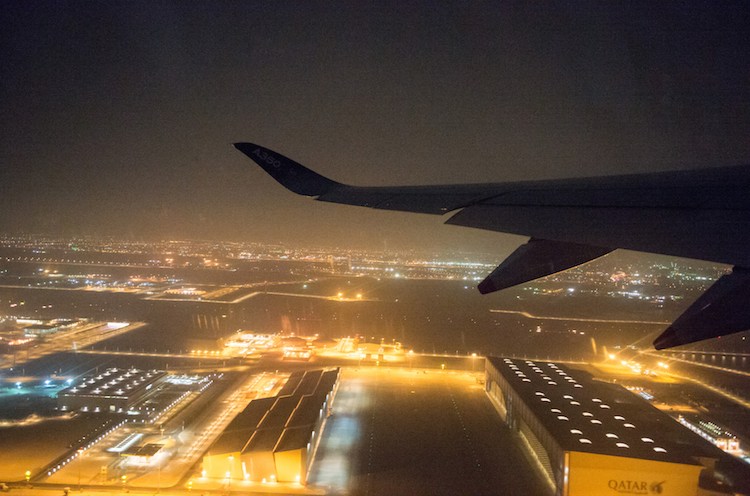
With the much-anticipated delivery of its first A350-900 to launch airline Qatar Airways, Airbus has delivered the last new-build airliner type currently on its radar, with the formal handover of MSN6, A7-ALA, in Toulouse on Monday.
“It’s a great day for everybody who loves commercial aviation,” Airbus CEO Fabrice Bregier said.
Together with the slightly smaller Boeing 787 Dreamliner and the slightly larger Boeing 777X, the A350 will provide the backbone of the international fleets that serve Australia, in the way that Airbus’s A330 and Boeing’s 777 do currently. Perth is already high on the list of Qatar Airways’ A350 destinations (first services will be to Frankfurt and Heathrow).
While the A380s operated from Australia by Qantas, Emirates, Singapore Airlines and, soon, Etihad provide maximum uplift and help to mitigate slot constraint capacity issues, efficient large twins featuring the latest generation of engine technology and the benefits of composite materials are the near and medium-term future.
The shorter A350-800 is still planned for an entry into service date of 2016, although the option of an A330neo – whether the -800 or -900 version – has led some customers to swap to the re-engined aircraft that more closely resembles Airbus’s original response to the 787 threat. Stretched A350-1000 aircraft will join the fleet in 2017 and, if industry scuttlebutt is to be believed, a further-stretched A350-1100 will round out the family.
These stretches, together with the new engine options (neo) that extend the life of the current A320, A330 and perhaps A380 families, will likely provide the basis for Airbus’s offerings to airlines through the 2030s.
Throughout the aircraft, Airbus has taken the opportunity to make improvements in the cabin – and not just in composite construction and taller windows. Recessed, future-proofed tracks for seatback entertainment and power cabling mean an end to the raised ridges that get in passengers’ way. Fewer inflight entertainment providers and the resulting ability to work more closely with them on moving the power and video supplies out of the way of passengers’ legs. And flexibility with crown accommodations for crew and underfloor rest areas mean that cabin space can be maximised.
Qatar Airways has chosen a two-class layout for its A350s, with the excellent B/E Aerospace Super Diamond fully flat bed (similar to that selected by Virgin Australia for its A330s and 777s) with direct aisle access in business class up front, and a roomy nine-abreast economy seat.
For economy passengers, the A350 is surprisingly better news than the 787 and the likely form the 777X will take. Most airlines have chosen the thigh-rubbingly narrow 17in seats — think domestic 737 size — in a nine-across layout on the 787, and similar seats are becoming the norm with current 777 operators.
Yet the A350’s 5.61m cabin width and vertical sidewalls give an extra 12cm to be split between the passengers on board. It might not sound like much, but the proof is in the XWB pudding. With the stark difference between a 17in and 18in seat, Airbus has selected a cross-section where the options are either a generous 18in in a 3-3-3 layout or a sub-16.5in in 3-4-3. Thankfully, airlines are picking the 18in seats.
It’s more than just the “passenger at heart, airline in mind” mantra that Zuzana Hrnkova, Airbus head of aircrafti nteriors marketing, was keen to get across at the industry’s APEX Expo this September. It’s recognising that, in a world where European regulators have approved pre-entry-into-service ETOPS-370, and where well-planned proving tour stops were made in Sydney, Perth and Auckland, ultra-longhaul flights are here to stay, and that the passenger experience needs to match.












